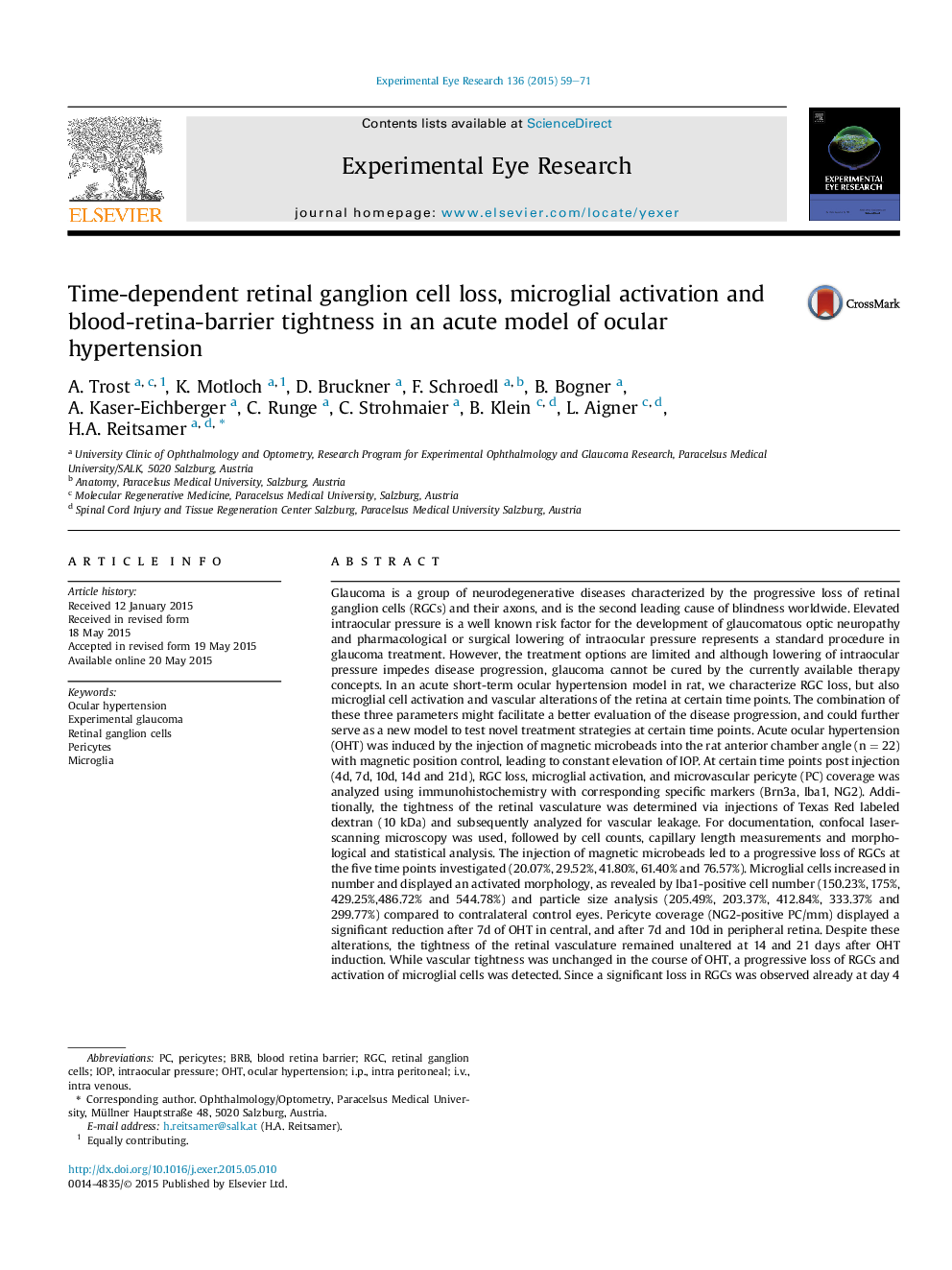| Article ID | Journal | Published Year | Pages | File Type |
|---|---|---|---|---|
| 4011149 | Experimental Eye Research | 2015 | 13 Pages |
•Chronological pathological changes in an acute model of ocular hypertension.•Evaluation of RGC degeneration and microglial activation at 5 time points.•Evaluation of retinal vascular alterations in the course of MB-induced OHT.•Definition of an optimal time frame (7–14d) to employ experimental interventions.
Glaucoma is a group of neurodegenerative diseases characterized by the progressive loss of retinal ganglion cells (RGCs) and their axons, and is the second leading cause of blindness worldwide. Elevated intraocular pressure is a well known risk factor for the development of glaucomatous optic neuropathy and pharmacological or surgical lowering of intraocular pressure represents a standard procedure in glaucoma treatment. However, the treatment options are limited and although lowering of intraocular pressure impedes disease progression, glaucoma cannot be cured by the currently available therapy concepts. In an acute short-term ocular hypertension model in rat, we characterize RGC loss, but also microglial cell activation and vascular alterations of the retina at certain time points. The combination of these three parameters might facilitate a better evaluation of the disease progression, and could further serve as a new model to test novel treatment strategies at certain time points. Acute ocular hypertension (OHT) was induced by the injection of magnetic microbeads into the rat anterior chamber angle (n = 22) with magnetic position control, leading to constant elevation of IOP. At certain time points post injection (4d, 7d, 10d, 14d and 21d), RGC loss, microglial activation, and microvascular pericyte (PC) coverage was analyzed using immunohistochemistry with corresponding specific markers (Brn3a, Iba1, NG2). Additionally, the tightness of the retinal vasculature was determined via injections of Texas Red labeled dextran (10 kDa) and subsequently analyzed for vascular leakage. For documentation, confocal laser-scanning microscopy was used, followed by cell counts, capillary length measurements and morphological and statistical analysis. The injection of magnetic microbeads led to a progressive loss of RGCs at the five time points investigated (20.07%, 29.52%, 41.80%, 61.40% and 76.57%). Microglial cells increased in number and displayed an activated morphology, as revealed by Iba1-positive cell number (150.23%, 175%, 429.25%,486.72% and 544.78%) and particle size analysis (205.49%, 203.37%, 412.84%, 333.37% and 299.77%) compared to contralateral control eyes. Pericyte coverage (NG2-positive PC/mm) displayed a significant reduction after 7d of OHT in central, and after 7d and 10d in peripheral retina. Despite these alterations, the tightness of the retinal vasculature remained unaltered at 14 and 21 days after OHT induction. While vascular tightness was unchanged in the course of OHT, a progressive loss of RGCs and activation of microglial cells was detected. Since a significant loss in RGCs was observed already at day 4 of experimental glaucoma, and since activated microglia peaked at day 10, we determined a time frame of 7–14 days after MB injection as potential optimum to study glaucoma mechanisms in this model.
